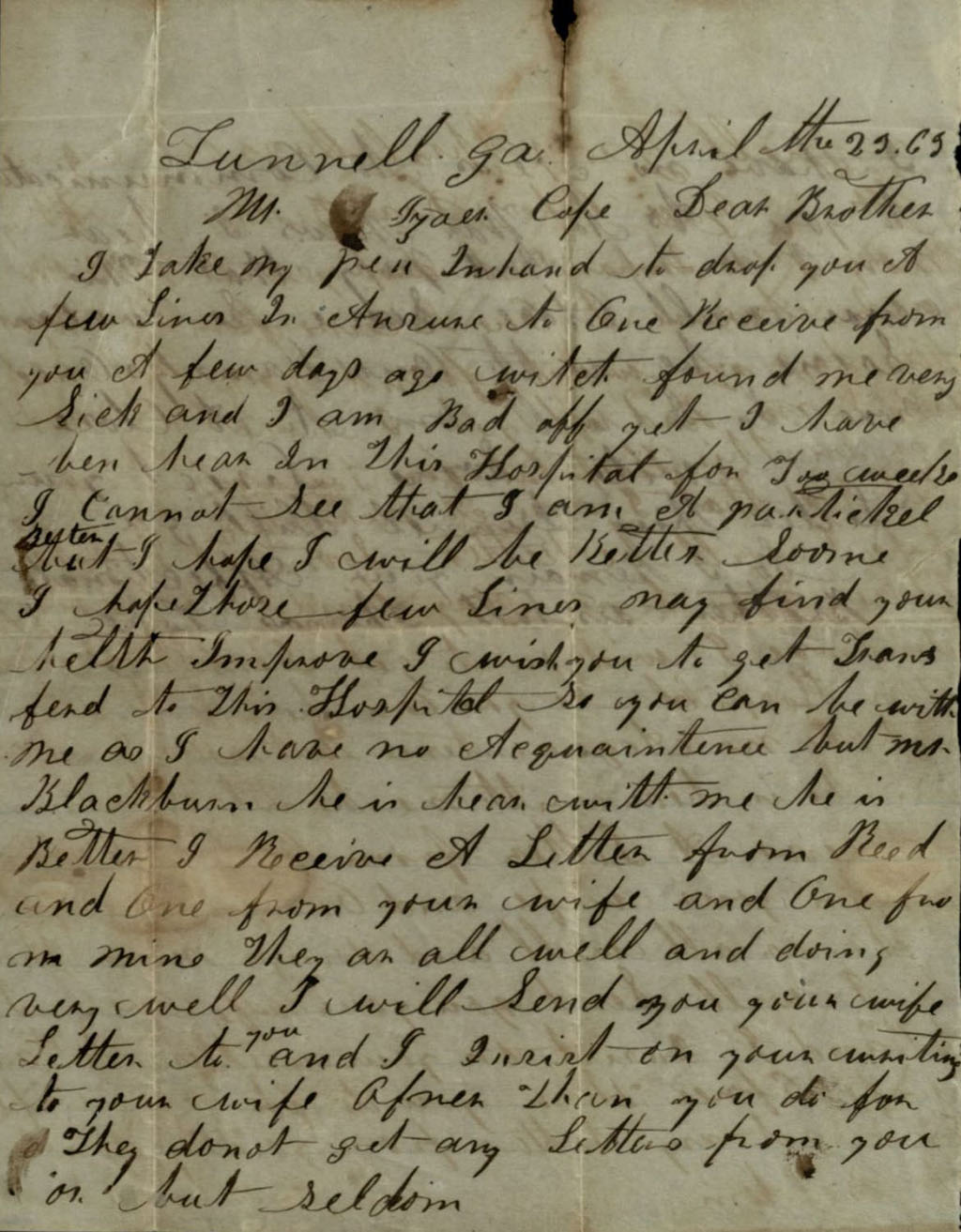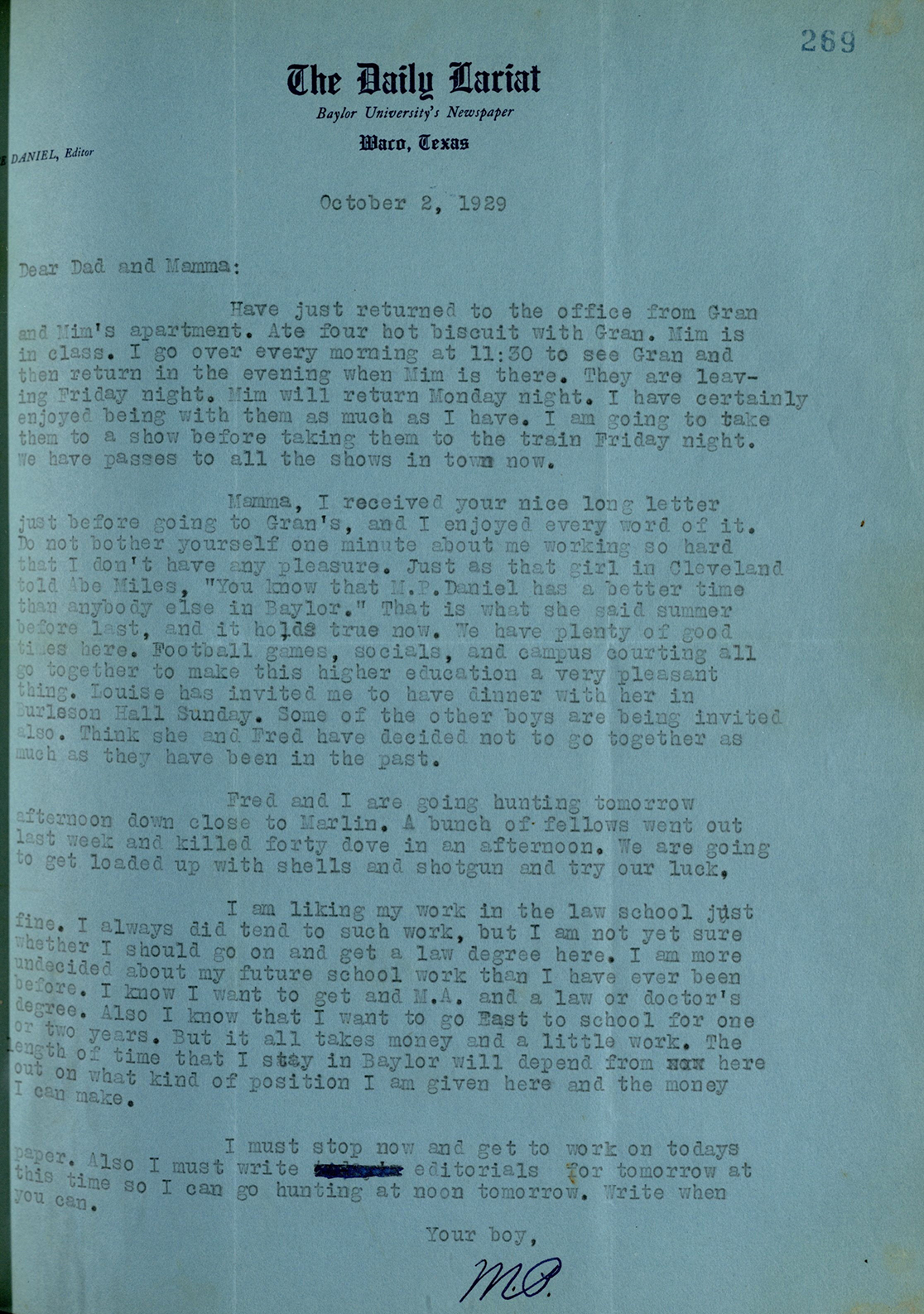This month we are featuring some collections processed by the Archival Collections and Museums graduate course that was taught at The Texas Collection by Dr. Julie Holcomb, with assistance from TC archivists. Each student in this class processed an archival collection and wrote a publicity piece promoting that record group. Check out a few of these pieces and learn more about the wide array of TC holdings! (See last week’s posts here.)
Finding Mr. Right

By Matthew Doyen, Museum Studies graduate student
During the first few weeks that the Bachman family papers were in my hands, I found myself transported back 100 years. Ella Bachman Jones, daughter of J.A. and Addie Bachman, lived in Austin and attended the University of Texas. It was during this collegiate period of her life that Ella started to keep letters that interested suitors would send her way. I can’t be certain that she would have been too keen on me reading her mail—but I am only human and couldn’t help myself.
A young gentleman and fellow Longhorn named Charles Pope Caldwell was one of the first of several to actively write to Ella. I must say that early on I was rooting for Charlie, who would soon graduate from Yale Law School and later become a member of the U.S. House of Representatives. His letters displayed a strong and true affection for his sweetheart but—as one can convey from Ella’s last name—he was unfortunately not her Mr. Right.
Her next suitor was a very heart-on-his-sleeve type of man who was doomed for disaster. Lewis Preston of Beaumont, Texas, owned his own drug company and was certainly fervent in the pursuit of his darling. Despite pouring out his soul several times, I’m afraid Lewis had little chance at success at being her Mr. Right. Around this time, the turn of the twentieth century, she began a correspondence with Charles Edgar Jones.

Edgar, as he was known, was from Lockhart, Texas, and owned the Lockhart Water Works with none other than J.A. Bachman, Ella’s father. It was evident from the century-old letters that this relationship—unlike their business—was meant to last. My favorite part of their journey was when they started to scale back their affectionate lines in fear that J.A. would open a letter and read the scandalous words inside. For a period of time, letters were sent almost once—and sometimes even twice—a day! Most of the time they didn’t say much, just a reminder at how much Edgar missed Ella. The letters didn’t stop until—from what I have gathered—the two said “I Do.” Even though Edgar passed away 33 years before his beautiful wife, he was forever Ella’s Mr. Right.
It was interesting looking at this story from entirely one viewpoint. Since none of Ella’s letters are in this collection—all we can do is imagine her waiting for the letters to arrive, tearing open the envelopes, and reading the same pages. It was definitely a treat to work with this collection (which also includes dozens of letters and other materials received by family members) and relive Ella’s love story.
Fight for Identity: A Baptist Personality Crisis

By Amanda Sawyer, Museum Studies graduate student
Throughout the nation in the late twentieth century, religious universities seemed to have lost a sense of who they were. The records of the Baptist Heritage Study show that Baylor University had its own identity crisis in the early 1990s.
A conservative resurgence had been brewing in the Southern Baptist Convention (SBC) for years and, beginning in 1990, the university began to distance itself from ultra-conservative Baptists wanting to dictate curriculum. A change to the university’s charter—spearheaded by President Herbert H. Reynolds—removed some of the sway which fundamentalists held in school policy.
Despite Reynolds’ intentions to strengthen the university, the move caused some to question Baylor’s Baptist identity. In response, Reynolds formed a subcommittee of the Baptist Heritage Group to research the religious and academic commitments of the university. Led by Associate Professor of Philosophy Dr. Michael Beaty, the committee set out to answer fundamental questions about the influence of religion and denomination upon higher education.
Their early work showed that universities throughout the country were struggling with similar problems. Realizing the issue was bigger than they originally thought, the committee prepared a proposal for a planning grant which was submitted to Lilly Endowment Inc. in January of 1992. After the foundation approved their plan in June, committee members intensified their efforts—including trips to other universities throughout the country considering similar questions.
The committee completed a planning grant proposal in May 1994 which expressed plans for a four-year study of Baylor’s identity. They hoped findings from the study would answer questions about Baylor’s self-understanding as a Christian University in the Baptist tradition while also examining why the charter had changed.
The records—mostly correspondence between committee members—provide a comprehensive view of the university’s fight to balance a strong academic record with denominational ties. Some of the most interesting pieces are messages between committee members as they debate their obligation to tell the trustees about their research. Although the Baptist Heritage Study records conclude with the 1994 grant proposal, it is clear that the group’s research continues to have a lasting impact on the university today.





























